Second Wines from 24 of Bordeaux’s Top Estates Offer Exceptional Quality at Lower Prices Making Them Attractive For Early Drinking and Father’s Day Gift + 6-Pack Cab-Sauv Showcase Selection ($395)
Join Us for Saturday Sips: Second Wines, Second Thought
Come as you are; come any time that’s convenient for you during our business hours to sample selection from this week’s selections. Our staff will be on hand to discuss nuances of the wines, the terroirs reflected, and the producers.
Rather than shedding tears, Bordeaux adds tiers—and classification is what Bordeaux is all about. While the Grand Vin is expected to be the A-game of any château, with technological advancements and an increasingly warm climate, the price of these top-shelf wines has risen with the temperature, and quality is ensured by an ever more rigorous selection of grapes on the sorting table.
Second wines—a tradition begun by Château Margaux in the 17th century—were the logical place to establish grapes deemed unfit for inclusion in the Grand Vin. And since the terroir in which they were grown was often similar, and occasionally identical to the first wines (and generally made by the same vigneron), it stands to reason that the great estates would release these ‘little brother wines’ under some version of their famous name.
This name-game association has a downside, of course: As the prices for a château’s main bottling rose, they found that they could easily command more for second wines as well, and inexorably, these began to be priced beyond the reach of many consumers as well. Especially in the Médoc, the cost of second wines crept up to a price point once paid for the first. Some châteaux found a solution in producing third wines, and although fourth wines are not unheard of, the bulk of a harvest that does end up in one of the three is generally declassified and sold to négociants.
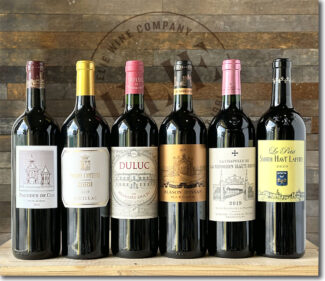
Left-Bank Cab-Sauv Showcase with 6-Pack Selection ($395)
This Father’s Day, there is need to let the old man play second fiddle; a table graced with Second wines keeps him first in our heart. We’ll package this remarkable set in a handsome wooden box; it contains six selections from the following 24 wines.
OR
Buy the whole lot, all 24 Bottles, at a deeper discount for $2100, average $87.50 a bottle.
Price Pressure
As mentioned above, any viable business must weigh the needs of customers with their ability to pay, and the cachet associated with First Growths in Bordeaux is so encompassing that maintaining quality outweighs any need for quantity. It’s fair to suggest that for Bordeaux’s most heralded names, second wines are not a bid for publicity, but exist as a vital—and growing—revenue source. In 2010, for example (one of the best years for quality in decades) only 40% of the harvest went into Lafite’s first wine while a full 55% went into Carruades.
In contrast is Château Léoville Barton, who uses about 80% of their grapes for their Grand Vin, a Deuxième Cru. It’s a somewhat unique philosophy, says proprietor Anthony Barton: “We produced some jolly good wines doing things that in the current era would make our oenologist scream. Grapes into one big wooden barrel, crushed by foot in the field. But we made vintages such as 1945 and 1947. The other day I found an invoice for a fiddler who played while we stomped. Now you need velvet gloves for touching the grapes.”
Precise Vinification
Other estates, like Château Pontet-Canet, express a goal of vinifying 100% Grand Vin—a once unreachable star brought closer to earth by advancing technology and better land management. Beyond the biodynamic movement which is sweeping most winemaking regions in the world, Picovale weather stations are increasingly allowing vineyard managers to be proactive in the face of incipient bad weather, especially the dreaded springtime frosts. Experience, formerly the sole means of measuring phenolic ripeness and knowing when to harvest, has guided winemakers in Bordeaux since Roman times, but technology can remove the last traces of guesswork. Brimrose Le Vigneron AOTF-NIR Analyzer calculates and levels of sugar and acidity, bringing groundbreaking insight to the exact time winemakers should be harvesting.
These innovations allow a much more precise product to be bottled, and with the increasing quest for perfection, they are becoming increasingly indispensable, even in a region where tradition is sacred.
Harnessing Young Vines
Older vines are a legacy among wine growers, and when they reach a certain age, it becomes a point of pride. With an expansive root system and substantial permanent wood, these vines have adapted to their environment and are more resilient to drought and extreme weather. At the same time, they are more prone to disease and damage and produce increasingly smaller yields, and at some point, it no longer makes sense to keep them in commercial production. Maintaining a sustainable economic vineyard means replanting, and in Bordeaux, mature vines are often replaced after about 35 years. After that, it takes between ten and twenty years for a vine’s fruit to reach potential, and a natural outlet for grapes from younger vines is an estate’s second and third wines, where it is expected that the tannins will be a bit coarser and less integrated, but which will mature more quickly than Grand Vin bottlings.
Access to Quality
In fact, the idea that second wines can be enjoyed earlier than their big brothers is one of their main selling points. Great wines may take twenty years to reach their apex; a lesser version may deliver its entire package upon release, or at least, within a few years. Second wines may come from the same winemaker who makes the first, and even the same plots of ground, but the philosophy is different. By using slightly less newsworthy fruit in the second wine rather than the first, the quality of the Grand Vin is expected to remain high; the alternative may to produce more Grand Vin with lesser grapes, but which would consequentially, be available at a lower price. It’s an endless balance, well summarized by Anthony Barton: “While I don’t believe that you can go too far in the search for perfection in wine, you can certainly go too far in search for profits.”
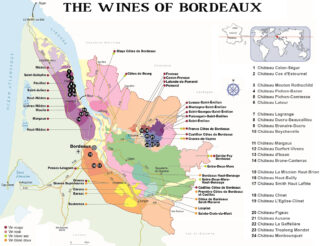
Saint-Estèphe: Fleshy With Exceptional Backbone, Lift and Energy
Situated at the northern end of the Haut-Médoc, just south of the Médoc appellation that runs north to the Pointe de Grave and the Bay of Biscay, Saint-Estèphe is one of Bordeaux’s famous ‘Left Bank’ appellations. With 3000 acres under vine, Saint-Estèphe accounts for roughly 8% of the vineyard area of the wider Médoc.
Because Saint-Estèphe is marginally further from the gravel-bearing waters of the Garonne, the terroir is less stony than that found in the southern part of the Haut-Médoc. Instead, heavy clay and a limestone base dominate this area, resulting in poorer-draining soils, delayed ripening and higher acidity levels in the wines. These factors tend to favor Merlot over Cabernet Sauvignon, which performs better on clay-rich soils.
Château Cos d’Estournel
Cos d’Estournel is found amid undulating terrain at the heart of the Médoc, and the name itself was chosen by the original owner, Louis Gaspard d’Estournel, to commemorate the rolling landscape on which the estate stands: ‘Cos’ is an old dialectical word for hill.
The estate’s vineyards extend over 170 acres divided into 30 parcels, 60% Cabernet Sauvignon and 40% Merlot, with minor cultivation of Cabernet Franc and Petit Verdot. The annual production is typically 32,000 cases.
 Château Cos d’Estournel ‘Pagodes de Cos’, 2016 Saint-Estèphe ($75)
Château Cos d’Estournel ‘Pagodes de Cos’, 2016 Saint-Estèphe ($75)
2016 Les Pagodes blend is precise: 50% Cabernet Sauvignon, 46.5% Merlot, 3% Petit Verdot and 0.5% Cabernet Franc. A seriously dark showcase for the region’s typical flavor profile, black cassis, graphite, black cherries and spicy smoked meat, showing the power of St-Estèphe clay.
*click on image for more info
Château Calon Ségur
Calon-Ségur is recognizable by the heart on the label, a result of the original owner Marquis de Ségur (who also owned Lafite and Latour) declaring, “My heart belongs to Calon.” Presumably, the current owners, the Gasquetons, feel the same way: Their vines are planted on deep gravel beds interspersed with sand and clay, and the Grand Vin has a higher-than-usual percent of Cabernet Franc, up to 15%.
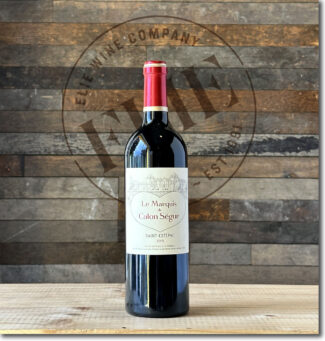 Château Calon Ségur ‘Le Marquis de Calon Ségur’, 2019 Saint Estèphe ($44)
Château Calon Ségur ‘Le Marquis de Calon Ségur’, 2019 Saint Estèphe ($44)
The 2019 blend of the estate’s second label is 56% Cabernet sauvignon, 35% Merlot, 7% Cabernet Franc and 2% Petit Verdot. Vinified and aged in 30% new oak, it has developed a following based on its own merits. It can age for a bit, but is fine now; it shows brambly red and black fruits, damp earth and leafy herbs with floral undertones just beginning to develop.
*click on image for more info
Saint-Julien: Delicate Perfume, Finesse and Solid Constitution
Great things come in small packages, especially when big money is involved. The smallest of the major Médoc appellations (under four square miles), Saint-Julien also boasts an astonishing pedigree: Fully 95% of the appellation sits on classified acreage. Key to the desirability of the wines produced here is the seamless fusion of concentration and elegance; the wines are of a style historically referred to as masculine, though more in the mode of a Knight Templar than a brawny warrior. This blend of finesse and fortitude comes in part from the preponderance of gravel in the best vineyards, allowing natural drainage in the wet years, radiating warmth in cool vintages, extending the growing season and allowing vine roots to extend deeply into the earth.
Château Branaire-Ducru
The deep gravel terroir (interspersed with clay deposits) that make up Ducru’s 150 acres vineyard is planted to 65% Cabernet-Sauvignon, 28% Merlot, 4% Petit Verdot and 3% Cabernet Franc, nearly the same as it was at the time of the 1855 Classification. Originally a part of Château Beychevelle, the family-owned estate today relies on a sustainable viticulture system; traditional plowing between the rows depending on soils and the behavior of the vines. Trellising and canopy management are done according to vineyard density and soil composition while vineyards are planted with vines selected in the old vineyards and produced in the nursery. Winemaker Jean-Dominique Videau says, “We are fortunate to be situated in the ‘golden triangle’ of Saint-Julien terroir. Super Second powerhouses are a mere five-minute walk from our humble Fourth Growth estate, and we are capable of producing excellent wines.”
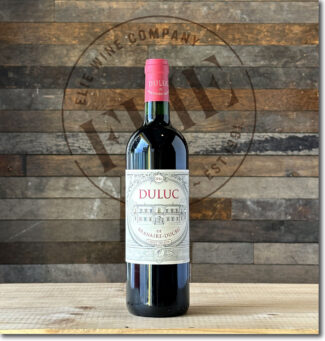 Château Branaire-Ducru ‘Duluc de Branaire-Ducru’, 2016 Saint-Julien ($49)
Château Branaire-Ducru ‘Duluc de Branaire-Ducru’, 2016 Saint-Julien ($49)
Duluc is the second wine of the château, born in 1998 and composed mainly of grapes from vines under 15 years old. Its goal is to be ‘as accessible as possible.’ The wine is fresh and lively, showing rich plum compote and blackberry reduction notes laced with licorice and violet.
*click on image for more info
Château Lagrange
Following its purchase by Suntory, the Lagrange estate expanded beyond Saint-Julien, bottling Haut Médoc and Bordeaux Blanc, and today, rather remarkably, it is the largest of the great Crus classified in 1855. With plantings that are 68% Cabernet Sauvignon, 25% Merlot and 7% Petit Verdot, the estate has undergone significant improvements over the past few decades; under the direction of Marcel Ducasse, Château Lagrange’s directeur from 1993 to 2007, the vineyard grew from 118 planted acres to 340 planted acres. The vine density was also increased as more than 100,000 new vines were added. In 1985, the new owners also began producing their second wine, ‘Les Fiefs de Lagrange.’
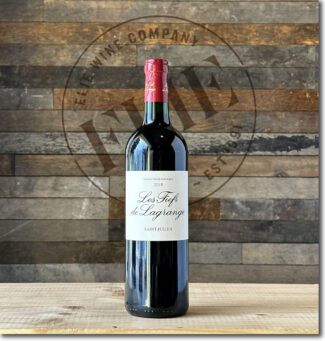 Château Lagrange ‘Les Fiefs de Lagrange’, 2019 Saint-Julien ($38)
Château Lagrange ‘Les Fiefs de Lagrange’, 2019 Saint-Julien ($38)
Under enologist Eric Boissenot, ‘Les Fiefs’ is soft, supple and easygoing, showing bright red cherry, mint, blood orange, spice and rose petal. 53% Cabernet Sauvignon, 44% Merlot and 3% Petit Verdot.
*click on image for more info
Château Beychevelle
The prestigious Cru Classé Beychevelle has feet in many centuries; the elegance of its classical architecture makes it a jewel in the crown of the Médoc which has marked the economic, political and cultural life of Bordeaux since the reign of Henry III. In February 2011, the château took on new owners when Suntory (along with Pierre Castel of the massive Castel Frères) purchased the estate. Planted on deep Garonne gravel, vines cover more than 220 acres planted with 56% Cabernet Sauvignon, 40% Merlot, 3% Petit Verdot and 1% Cabernet Franc.
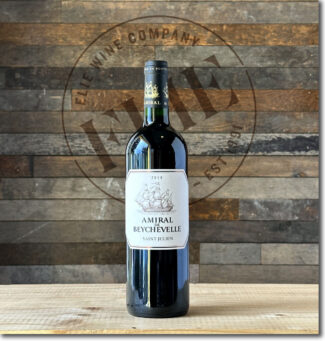 Château Beychevelle ‘Amiral de Beychevelle’, 2018 Saint-Julien ($53)
Château Beychevelle ‘Amiral de Beychevelle’, 2018 Saint-Julien ($53)
2018 checks in at 63% Cabernet Sauvignon, 32% Merlot; the remaining Cabernet Franc comes from the younger vines of the estate and slightly more sandy soils. The wine provides an array of blueberries, black cherries, tobacco and spring flowers with a savory, balanced structure.
*click on image for more info
Château Ducru-Beaucaillou
There’s more to the name than a lovely rhyme; it encapsulates both the original owner and the timeless terroir. Bertrand Ducru purchased the estate in 1795, where the vineyards are peppered with quartz pebbles, forcing the vines to struggle for nutrients. In French, ‘beaux cailloux’ means ‘beautiful pebbles.’ This results in reduced yields and small, concentrated grapes that are packed with nuanced mineral notes. The average age of Ducru vines is 35 years, but there is at least one parcel (Les Sadons) where the vines are over a century old.
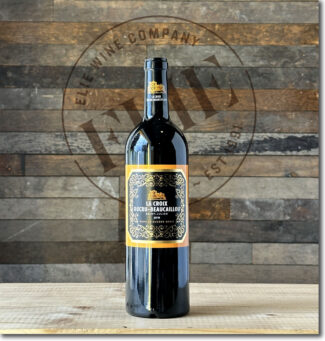 Château Ducru-Beaucaillou ‘La Croix Ducru-Beaucaillou’, 2018 Saint-Julien ($73)
Château Ducru-Beaucaillou ‘La Croix Ducru-Beaucaillou’, 2018 Saint-Julien ($73)
The estate does not market La Croix Ducru-Beaucaillou as a ‘second wine’ because it comes from a different source: an inland vineyard on the south bank of the La Mouline stream close to Château Talbot; it was previously sold as Château Terrey-Gros-Caillou. It is muscular yet fresh, displaying a full range of berry, lavender rose petal, mint, spice and gravel inflections.
*click on image for more info
Margaux: Miraculous Marriage between Density and Grace
In terms of size and renown, Margaux is a vastly important appellation, with 21 Cru Classé properties from the 1855 Bordeaux Classification within its borders and more acres under vine than any other Haut-Médoc AOP but Saint-Estèphe. As feminine as the name are the wines of Margaux, at least by traditional standards—they are famous for their perfumed fragrance and lilting, delicate expression of terroir; in cooler vintages, they may come across as lightweights compared to the powerhouses of Pauillac, but in fine vintages they are incomparable in grace and depth.
Château d’Issan
The roots of Château d’Issan’ vines delve deeply into Margaux’s gravel, but not as deeply as the roots of the estate delve into history. One of the oldest producing châteaux in Bordeaux, wines from d’Issan vineyards were used to toast the marriage of Eleanor of Aquitaine and King Henry the Second. In 2013, Château d’Issan sold a 50% stake to Jacky Lorenzetti of Château Lilian Ladouys, Château Lafon-Rochet in St. Estèphe and Château Pedesclaux in Pauillac. Along with Emmanuel Cruse, the winemaking has been upgraded to include sorting tables and a new pneumatic press along with an increase of the proportion of new French oak barrels used to age the wine; currently an average of 50%.
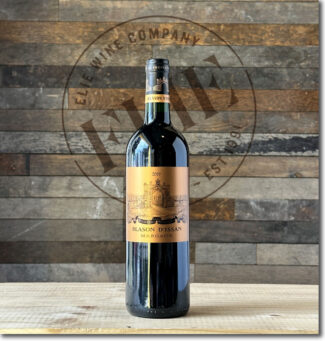 Château d’Issan ‘Blason d’Issan’, 2019 Margaux ($44)
Château d’Issan ‘Blason d’Issan’, 2019 Margaux ($44)
D’Issan’s second wine, introduced in 1995, and made from the estate’s youngest vines. It is fruity and accessible, offering a bouquet of blackberry and cranberry laced with undergrowth, mint, lavender and tobacco leading to full, fruity mid-palate and a mineral-driven finish.
*click on image for more info
Château Brane-Cantenac
One of fifteen Deuxièmes Crus (Second Growths) in the original Bordeaux Wine Official Classification of 1855, the estate had been producing one of the Médoc’s most highly regarded wines long before that. For four consecutive generations, the Lurton family has been at the helm, with Henri Lurton as the current proprietor. He says, “The exceptional terroir of Château Brane-Cantenac is made of deep quaternary-era gravels. Each plot has been carefully studied to plant the most suitable grape-variety, the one which will express itself the best on it. Along with my team we strive to reveal each plot’s potential by working in a plot by plot and intra-plot approach: The ‘Burgundy way.’”
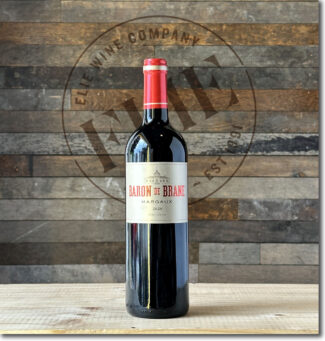 Château Brane-Cantenac ‘Baron de Brane’, 2020 Margaux ($37)
Château Brane-Cantenac ‘Baron de Brane’, 2020 Margaux ($37)
With a highly aromatic nose typical of Margaux, the 2020 ‘Baron de Brane’ delivers succulent ripe cherry, spice and leather sage and graphite. It’s a supple and creamy place-holder to enjoy on release while waiting for the Grand Vin to develop.
*click on image for more info
Château Durfort-Vivens
Château Durfort-Vivens produces wine from a 150-acre vineyard that sits on deep gravel with a sandy-clay subsoil and in 2016, became the first of the Margaux Classified Growths to obtain both organic farming and biodynamic certifications. While the wines have been labeled ‘zero residue’ since 2014, the property has also been HVE and SME certified since 2019. This primarily due to the input of winemaker Gonzague Lurton, who adds, “The mild air of the Atlantic Ocean and the Gironde, along with shelter from the surrounding Landes forest, give us our temperate climate. Each of our plots is vinified separately and fermented in wooden and concrete vats. Aging then occurs for an average of 18 months in fine-grain French oak.”
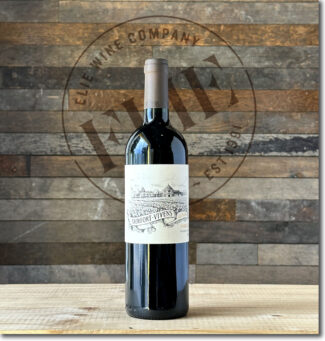 Château Durfort-Vivens ‘Les Plantes’, 2019 Margaux ($44)
Château Durfort-Vivens ‘Les Plantes’, 2019 Margaux ($44)
88% Cabernet Sauvignon 10% Merlot and 2% Cabernet Franc, Durfort-Vivens second wine is a cornucopia of ripe red orchard fruit; kicking in mid-palate are blackberries, sesame seeds and salted chocolate with a touch of menthol at the end.
*click on image for more info
Château Margaux
This formidable Premier Cru has been owned by the Mentzelopoulos family since 1978. Following the death of their winemaker through 33 vintages (Paul Pontallier) the estate is currently overseen by director Philippe Bascaules and technical director Sebastien Vergne, working with consultant Eric Boissenot. In total, the estate has 200 acres under vine, with Cabernet Sauvignon dominant (75%) and Merlot making up most of the rest, along with a smattering of Cabernet Franc and Petit Verdot. Typically, about 30,000 cases of red wine are made, with the Grand Vin usually accounting for just over 40% of the total and white wine amounting to less than 3,000 cases.
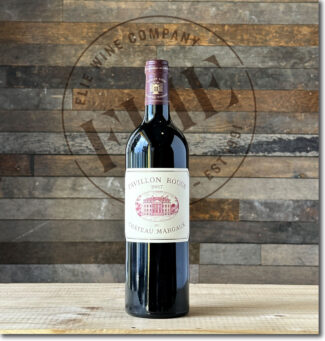 Château Margaux ‘Pavillon Rouge de Château Margaux’, 2015 Margaux ($297)
Château Margaux ‘Pavillon Rouge de Château Margaux’, 2015 Margaux ($297)
More emphasis has been placed on quality when producing ‘Pavillon Rouge’ in this century than ever before in history. According to Philippe Bascaules, “For the 2015 vintage no more than 23% of our harvest went into the blend. Thanks to this severity, the style of the Pavillon Rouge is continuing to approach that of the Grand Vin. The Cabernet Sauvignon constitutes 74% of the blend; it brings a dense texture, an ample palate and a long finish sustained by the peppered mint and sap aromas. The Merlot accounts for 21% of the blend and envelops the wine with a captivating silky veil. The 4% of Petit Verdot brings spicy aromas and the 1% of Cabernet Franc completes the blend. With its structure, its refinement and its length, the Pavillon Rouge 2015 is probably the best Pavillon Rouge that we have ever produced.”
*click on image for more info
Pauillac: Elegance and Power Coupled with Complexity
The most singularly revered appellation on earth; Pauillac is to wine what The Beatles are to pop music. Though fewer than ten square miles in total, three of the top five châteaux in the 1855 Médoc Classification are located here, and so varied is the topography that each estate is able to market the individual nature, in style and substance, of their wares. And it is this trio of skills—growing, producing and selling—that has made the region almost a cliché, synonymous with elite wine, where futures sell for exorbitant rates long before the wine is even in the bottle.
Château Pichon Longueville – Comtesse de Lalande
Virginie, the Comtesse de Lalande, and her two sisters also received as an inheritance a portion of the Château Pichon Longueville estate. Once considered unusual for using a much higher proportion of Merlot in the final blend, the estate has, over the years, complied to more ‘Pauillac’ standards; today, the Grand Vin may contain up to 75% Cabernet Sauvignon.
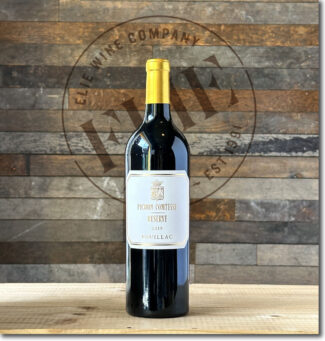 Château Pichon-Comtesse ‘Pichon Comtesse Réserve’, 2019 Pauillac ($75)
Château Pichon-Comtesse ‘Pichon Comtesse Réserve’, 2019 Pauillac ($75)
Representing one of the best of recent editions of this wine, the 2019 Réserve is composed of 51% Cabernet Sauvignon, 46% Merlot, and 3% Cabernet Franc. It opens with a savory blend of smoked meats, tapenade, and herbs and way to a core of cassis, pencil shavings and cracked pepper with a waft of cumin seed above layers of fruit and spice.
*click on image for more info
Château Pichon Baron – Baron de Pichon-Longueville
‘When you’re number two, you try harder’ is an aphorism that may hold true in automobile rentals, but in the Médoc, the chances are slim that any Deuxième Cru will have its seat upgraded any time soon. But it is arguable to suggest that Pichon Longueville is first among seconds, and it boasts a terroir essentially identical to Château Latour, immediately next door. Originally part of a larger estate (Château Pichon Longueville) the property was subdivided in 1850 between the owner’s children, among them, Baron Raoul de Pichon Longueville.
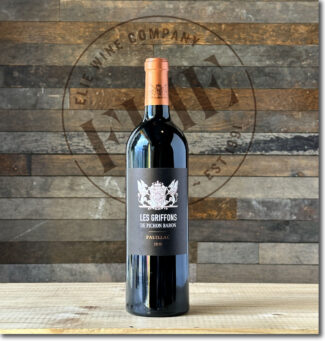 Château Pichon-Baron ‘Les Griffons de Pichon Baron’, 2018 Pauillac ($64)
Château Pichon-Baron ‘Les Griffons de Pichon Baron’, 2018 Pauillac ($64)
Château Pichon Baron’s second label, 52% Cabernet Sauvignon and 48% Merlot. It is filled with the cedar-and-camphor tinged cassis that is trademark of Pauillac Cabernet, well-balanced by the plummy lushness of Merlot fruit, everything wrapped in a delightful cloak of finely-grained tannins and elegant oak.
*click on image for more info
Château Latour
Latour’s Grand Vin label is synonymous with its prime terroir, ‘L’Enclos’—a hundred sixteen walled acres studded with old vines, a mere thousand feet from the Gironde. The estuary mellows weather extremes while the soil is key to the wine’s legendary complexity; clay gravel in the heart with sandy gravel at the periphery. These deposits, millions of years old, encourage the vines to develop root systems up to ten feet deep, while the rich subsoils that retain rainwater and see the vines through droughts. The opposite problem is solved mechanically, primarily by a drainage system installed in the 19th century. The combination of location and technical know-how permits Latour to turn out exceptional wines even in vintages that are deemed to have been off years.
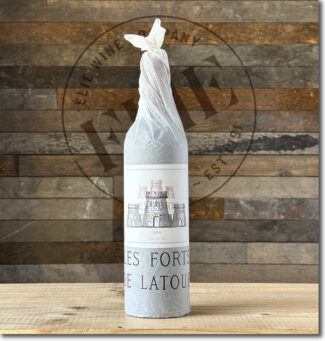 Château Latour ‘Les Forts de Latour’, 2014 Pauillac ($315)
Château Latour ‘Les Forts de Latour’, 2014 Pauillac ($315)
71.4% Cabernet Sauvignon and 28.6% Merlot; Pauillac was, quite arguably, the star appellation of 2014—a vintage which may be called ‘dramatic’ without overstating. For most of the season, it was shaping up to be a forgettable harvest (like 2013), but in September the weather shifted from damp to gorgeous, and a long Indian Summer that extended well into October led to a delayed harvest. One of the hallmarks of 2014 was this extended hang time, which in the finest wines manifested itself in rich, fresh fruit flavors and silky, polished tannins. As a result, the 2014 Les Forts has been called ‘Margaux-like’.
*click on image for more info
Château Mouton Rothschild
The hallowed vineyards of Mouton Rothschild are planted on a narrow strip of land close to the Gironde, which moderates the temperature and irrigates the land. The soils are gravel-filled, unsuitable for agriculture beyond grapes, and yet here as set the lowly vine on a pedestal unmatched throughout most of the rest of the world. In 1988, Baroness Philippine de Rothschild succeeded her father Baron Philippe at the helm of the estate, becoming the guarantor of quality of a wine so illustrious that it was the only one to have its status upgraded to Premier Cru Classé from the original 1855 classification. The Baroness proudly exclaimed Mouton’s motto: “First I am, second I was; I, Mouton do not change.”
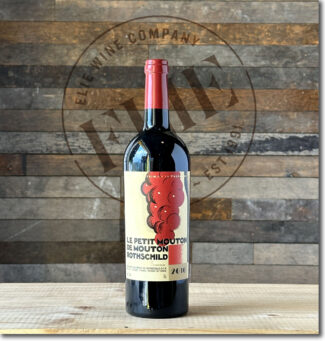 Château Mouton Rothschild ‘Le Petit Mouton de Mouton Rothschild’, 2016 Pauillac ($342)
Château Mouton Rothschild ‘Le Petit Mouton de Mouton Rothschild’, 2016 Pauillac ($342)
A blend of 62% Cabernet Sauvignon, 35% Merlot and 3% Cabernet Franc, Mouton’s second label shows seductive expression in a somewhat austere vintage. It offers up an intensely plummy nose with cigar box and forest-floor scents with layers of kirsch, blood orange, red and black currants behind a firm frame of grainy tannins.
*click on image for more info
Pessac-Léognan: Médoc-like But With a More Supple Texture
As a stand-alone appellation, Pessac-Léognan is still in the bloom of youth; it was formally established in 1987 in recognition of the truly outstanding long-lived red and white wines of northern Graves. The appellation includes the only red-wine producer outside the Haut-Médoc to be classified in 1855, the Premier Cru Château Haut-Brion. Soils here, as in most of Graves, are filled with gravel and sand, a terroir that favors Cabernet Sauvignon and Cabernet Franc over Merlot.
Château Smith Haut Lafitte
Rated as a red wine ‘Grand Cru Classé’ in the 1959 Classification of Graves, the château sits on a low hill of pebbles and sand deposited by the Garonne River, offering grape vines not only superb drainage, but also reflected sunshine to lengthen the day’s ripening period. The estate is not to be confused with Château Lafite Rothschild (the Pauillac superstar) with which it has no connection, but both were named for their elevated physical status— ‘la fite’ is an ancient dialectical word for hill.
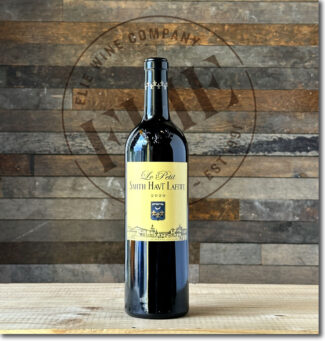 Château Smith Haut Lafitte ‘Le Petit Smith Haut Lafitte’, 2020 Pessac-Léognan ($53)
Château Smith Haut Lafitte ‘Le Petit Smith Haut Lafitte’, 2020 Pessac-Léognan ($53)
Composed of 60% Cabernet Sauvignon and 40% Merlot and aged in 30% new barriques, the 2020 Le Petit Haut Lafitte is an alluring aromatic blend of blackberry preserves warm cassis with wafts of roses and cinnamon toast and a hint of dried mint.
*click on image for more info
Château La Mission Haut-Brion
Despite a fabulously detailed history dating back centuries, the La Mission Haut-Brion property has seen some checkered years. The Woltner family, who held title to the property between 1919 and 1983, were responsible for the estate’s second life, and today it is owned by Joan Dillon, the Duchesse de Mouchy; her son Prince Robert of Luxembourg took over from his mother as Président Directeur Général in 2008 and he runs the estate with the assistance of manager Jean-Philippe Delmas, son of Jean-Bernard Delmas. Under their direction, the wines made here are capable of challenging Château Haut-Brion for supremacy within the appellation.
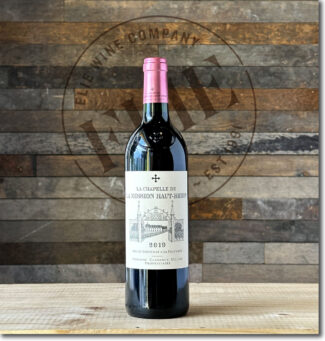 Château La Mission Haut-Brion ‘La Chapelle de La Mission Haut-Brion’, 2019 Pessac-Léognan ($99)
Château La Mission Haut-Brion ‘La Chapelle de La Mission Haut-Brion’, 2019 Pessac-Léognan ($99)
Composed of 50.1% Merlot, 45.5% Cabernet Sauvignon and 4.4% Cabernet Franc, a very precise blend that creates a remarkable synergy; inky dark berries shrouded in pretty, spicy smoke with hints of licorice and graphite.
*click on image for more info
Château Haut-Bailly
At just under 75 acres, Haut Bailly is a moderate-sized estate that produces about 80,000 bottles per year. The grapes line up in the vineyard in an order typical for Haut-Médoc, 60% Cabernet Sauvignon, 34% Merlot, 3% Cabernet franc and 3% Petit Verdot, although it is located in the commune of Léognan, which is usually more associated with white wine production. Since being purchased in 1998 by American banker Robert G. Wilmers, Bailly has steadily improved its output and now numbers in the upper echelon of Pessac-Léognan.
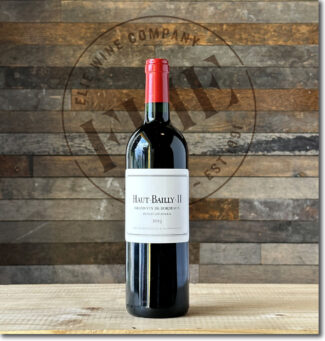 Château Haut-Bailly ‘ Haut-Bailly II’, 2019 Pessac-Léognan ($45)
Château Haut-Bailly ‘ Haut-Bailly II’, 2019 Pessac-Léognan ($45)
Haut-Bailly II is the new name for the estate’s second wine. Previously sold as ‘La Parde de Haut-Bailly’, the 2019 is somewhat Merlot-heavy, with 65% Merlot and 35% Cabernet Sauvignon. It is vinified and aged in 30% new French oak and shows luscious aromas of black raspberries, cherries, cassis, graphite, and spicy wood, reflecting the vintage’s fresh, clean, pure character and beautiful richness.
*click on image for more info
Pomerol: Plump, Velvety Mouthfeel and Notable Plummy Depth
Lacking a detail-laden history, a focal-point eponymous town, a château-laden landscape or an ancient classification system, Pomerol does not conform to the accepted image of a Bordeaux wine district. Still despite its tiny size (under 2000 acres), Pomerol has wormed its way onto a prominent perch among the world’s most revered wine regions. Merlot is the dominant grape variety in Pomerol and as a result, the wines tend to be rich, silky and approachable at an early age, while also being capable of extended aging. Cabernet Franc is also often present, adding structure and an element of savory spice to the blend. The best wines come from the eastern section of the appellation on the marginally higher land where Pomerol meets Saint-Émilion. It is here that the most famous Pomerol is found, including the château that is more famous than the appellation itself, Pétrus.
Château Clinet
Clinet lies at one of the highest points on the Pomerol plateau, home to one of the oldest vineyards in the appellation. Its 27 acres of vines are planted to 88% Merlot and 12% Cabernet Sauvignon at an average age of 42 years. Ronan Laborde, at the helm of the estate since 2004, has engaged in substantial transformations: Replanting, developing environmentally-friendly practices, rebuilding the winemaking facilities and reorganizing Clinet’s distribution. He says, “Our philosophy is centered upon preserving the Clinet spirit: celebrating the relationship between man and nature, and the satisfaction of receiving such a wonderful gift from Mother Earth.”
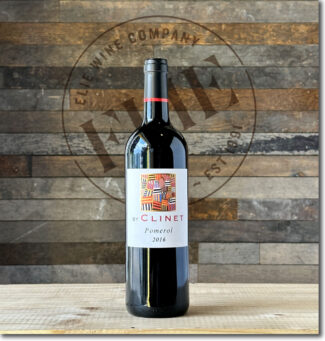 Château Clinet ‘Fleur de Clinet’, 2016 Pomerol ($49)
Château Clinet ‘Fleur de Clinet’, 2016 Pomerol ($49)
Rather than being a ‘second wine’, ‘Pomerol is a Cuvée de Négoce—a blend made from selection of wine-growers, including Château Clinet. The vinification and aging are carried out by the Clinet team, with as much attention as for the Grand Vin and aged in used oak to enhance the finesse of the Pomerol fruit, with cranberry, red currant and truffle with hints of fresh hazelnut.
*click on image for more info
Château L’Eglise-Clinet
Though it may not roll off the tongue as readily as Pétrus, Château L’Eglise-Clinet is now amongst the elite producers in Pomerol. Its vineyards were originally part of Château Clinet and Château Clos L’Eglise respectively; they fused in the 1950s. L’Eglise-Clinet was owned and run by Denis Durantou since 1982: Its 14 acres of vineyards are located on the Pomerol plateau, where the soils are rich in gravel, clay, sand and iron. As a result, as in much of Pomerol, L’Eglise-Clinet’s wine is Merlot-based, typically 80% Merlot and 20% Cabernet Franc. Denis Durantou passed away at age 62 in 2020.
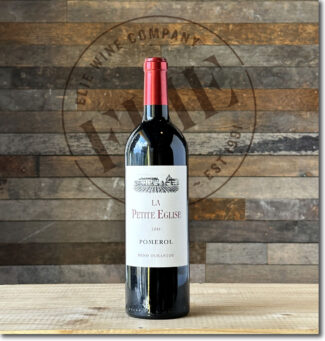 Château L’Eglise-Clinet ‘La Petite Eglise’, 2018 Pomerol ($73)
Château L’Eglise-Clinet ‘La Petite Eglise’, 2018 Pomerol ($73)
Denis Durantou’s second wine is deadly serious in its own right (bank), but is found at a fraction of the price of the flagship; as such, it is considered perhaps the best value in Pomerol. Since its debut in 2004, this has been a 100% Merlot cuvée and has come from fruit harvested on sandier soils. However, in 2018, many Merlot vines were dug up for replanting, as a result, this ‘La Petite’ contains 20% Cabernet Franc. Only 400 cases were produced, aged in 35% new oak in the Clinet cellars. The wine shows crushed berries, kirsch, black truffles and spring violets.
*click on image for more info
Saint-Émilion: Supple, Round and Plenty of Silky Mouthfeel
Nowhere in Bordeaux is a genuflection to history more obvious than in Saint-Émilion, which is speckled with Roman ruins and at whose center stands a limestone church built by the region’s namesake, Saint Émilian of Lagny. The vineyards are numerous and small, averaging around fifteen acres and spread across a triad of terroirs that can be roughly defined as a central limestone plateau, the clay and chalk-rich slopes of that plateau and the flatland beyond. What all three topographical areas have in common is cooler soils better suited to Merlot and Cabernet Franc. For the most part, Cabernet Sauvignon does not ripen well in Saint-Émilion except in small pockets, most notably on an ancient alluvial terrace in the northwest, where free-draining gravel soils are similar to those found in the best properties of the Graves and Médoc.
Château Monbousquet
When Gérard Perse bought Château Monbousquet in 1993, it was his first, though no means his last vineyard purchase. No one would have blamed him for having second thoughts—his first harvest was in the notorious difficult 1997, in which he was only able to produce about 500 bottles of wine. In the aftermath of the disaster, he began renovating the estate, analyzing and ultimately draining the 80-acre vineyard to limit the rise of the water table during prolonged wet spells. The winemaking facility and cellar ware rebuilt and then, working with a French pension fund and French tax laws, he arranged for his daughter Angélique and her husband, Henrique Da Costa to take over Monbousquet along with Gérard’s subsequent purchases, Château Pavie, Château Bellevue Mondotte and Château Pavie Decease.
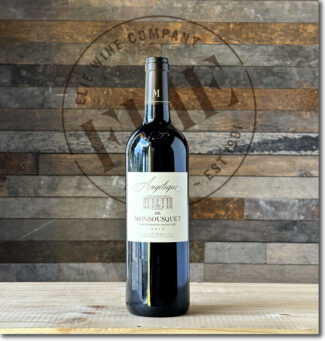 Château Monbousquet ‘Angélique de Monbousquet’ , 2018 Saint-Émilion Grand Cru ($35)
Château Monbousquet ‘Angélique de Monbousquet’ , 2018 Saint-Émilion Grand Cru ($35)
60% Merlot, 30% Cabernet Franc and 10% Cabernet Sauvignon; the wine is aged 18 months in French oak barrels and bottled unfiltered, producing a round, creamy second label from terroir identical to the first. Stone and walnut undertones blanket a rich, fruit-forward bouquet tinged on the palate with black cherry, chocolate, licorice and cloves.
*click on image for more info
Château La Gaffelière
Based on the Saint-Émilion rating system, La Gaffelière was a Premier Grand Cru Classé B, but like Châteaux Angélus, Cheval Blanc and Ausone did following the 2012 update, Château La Gaffelière has now dropped out of the system, stating that the new method of ranking called into question the quality level of a terroir that has been acclaimed and distinguished by the AOP wine authorities for more than 65 years.
One thing did not change: After three centuries, Château La Gaffelière still belongs to the Malet-Roquefort family. And who would leave? Château La Gaffelière is fabulously well-placed, just below Ausone and next to Bélair-Monange and Canon La Gaffelière on a combination of plateau, côte (slope) and pied de côte (foot of the slope) clay-limestone terroirs. With 55 acres under vine, Alexandre de Malet-Roquefort says, “Our wine comes from an exceptional terroir nested between the hills of Pavie and Ausone. But a great terroir is nothing without the willingness of men. The family de Malet Roquefort has run the estate with passion for more than three centuries, with a single purpose: Upgrading the vineyards whilst producing an amazing ageing wine.”
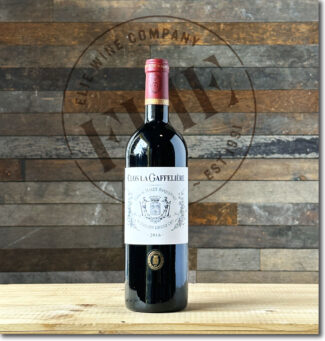 Château La Gaffelière ‘Clos La Gaffelière’, 2016 Saint-Émilion ($45)
Château La Gaffelière ‘Clos La Gaffelière’, 2016 Saint-Émilion ($45)
85% Merlot and 15% Cabernet Franc, the wine shows stewed red and black plums, mulberries and Morello cherries with hints of damp earth, tar and bouquet garni. Instantly approachable with fine-grained tannins and loads of freshness.
*click on image for more info
Château Troplong Mondot
Château Troplong Mondot is a paean to sustainability: For the last 20 years, the use of herbicides has been totally eliminated and the estate Troplong Mondot has set in place a sophisticated drainage protocol to overcome the subsoil’s hydromorphy and eight dray horses have now replaced tractors. “In addition,” says estate manager Aymeric de Gironde, “new plantings are arranged in staggered rows and there is less compaction of the soils due to the animal traction, so the vineyard breathes better.”
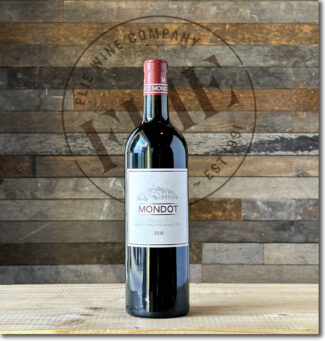 Château Troplong Mondot ‘Mondot de Troplong Mondot’, 2018 Saint-Émilion ($59)
Château Troplong Mondot ‘Mondot de Troplong Mondot’, 2018 Saint-Émilion ($59)
85% Merlot, 13% Cabernet Sauvignon and 2% Cabernet Franc, the wine shows black cherries, red plums, graphite, espresso, Asian spices, and gravelly earth.
*click on image for more info
Château-Figeac
Figeac is the largest estate of Saint-Émilion, covering 133 acres, of which around a hundred are under vine. It is known as the most Médoc of the Right Bank, blending mostly Cabernet grapes over Merlot. The wine’s distinctive ‘old Bordeaux’ style comes from complex soils: Three warm gravel hills surrounding the estate and offer natural drainage, while cooler blue clay subsoil provides nutrients for deep vine roots. Several microclimates and older vines lend character. Frédéric Faye, winemaker and managing director of Château-Figeac, says the estate has “always produced great wines” but in recent vintages, fine-tuning has paid off: “The scope for qualitative improvement lies in details that go even further to highlight the uniqueness of the Cru and its terroir purity. Such refinement includes improving tannin texture, aromatic expression and the power of seduction in youth while preserving the aging potential and identity.”
 Château-Figeac ‘Petit-Figeac’, 2018 Saint-Émilion ($89)
Château-Figeac ‘Petit-Figeac’, 2018 Saint-Émilion ($89)
A blend of 45% Cabernet Sauvignon, 39% Merlot and 16% Cabernet Franc, all from young vines. The vintage is aged for 15 to 18 months in French oak barrels, 30% new wood. Sharing texture with the estate’s Grand Vin along with a dark, bright color, Petit-Figeac 2018 is expressive and fresh, showing sweet dark cherry, plum, tobacco, mint, licorice and leather.
*click on image for more info
Château Ausone
Despite being heralded as a Premier Grand Cru Classé A, Château Ausone retains a relatively low profile, due in no small measure its size. Encompassing a mere 17 acres in a region where 70% of the estates are larger than 50 acres, the output of Ausone is similarly restrained; even in spectacular vintages, fewer than 2,000 cases are produced. Château Haut-Brion, in contrast, releases ten times as many.
But ask almost any French vigneron to name the best terroir in Bordeaux and the majority will say that it belongs to Château Ausone. Grown on Asteria limestone along terraces splashed in sunlight, protected from wind by geography and then nurtured in the cellar by Alain Vauthier (whose family has been making wine at Ausone since 1690), the typical profile of an Ausone Grand Vin is reticent and reserved in its youth, with a persistent elegance supplemented (especially in recent vintages) by a polished texture and aromatic complexity. With maturation, these elements combine to make Château Ausone a sublime secret.
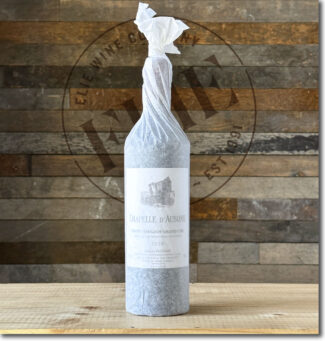 Château Ausone ‘Chapelle d’Ausone’, 2019 Saint-Émilion ($270)
Château Ausone ‘Chapelle d’Ausone’, 2019 Saint-Émilion ($270)
45% Merlot, 45% Cabernet Franc, 10% Cabernet Sauvignon, with 85% new oak; a blend of wine from young vines with a few barriques of declassified Ausone. Brilliant flashes of juicy blackberry, warm plum compote and redcurrant jelly in the forefront with suggestions of sassafras, cedar chest, menthol and aniseed throughout. Fewer than one thousand cases were made.
*click on image for more info
Vintage Journal
2020: ‘Classic Modern. Highly Aromatic With Beguiling Purity’
January and February were mild, and March began warm and wet with bud break about two weeks ahead of the long-term average. April was the third hottest for 50 years and wet weather continued into May, meaning intense mildew pressure. The last two weeks of May and the first week of June, were dry and warm, and flowering came off successfully. There was more rain in mid-June, but then eight weeks of largely dry weather, though without heat spikes and with cool nights, steady heat but not fierce heat. Dramatic storms hit during the week of August 9, refreshing the vines, and conditions then turned cooler until the end of the month and the season ended just one week ahead of the long-term average. 2020 wines are fresh, lively, vivid and balanced, without the baroque power of 2018 or the concentrated force of 2019, but with beguiling purity of fruit and floral notes. At the commune scale, Margaux and Pessac-Léognan are both particularly successful, perhaps because Merlot plays a more significant role here than elsewhere on the Left Bank.
2019: ‘Vivacious With Poise and Concentrated Force’
After a mild, dry seasonal start, April was wet and a little cooler than normal, followed by a cool May. Bud burst was early, and there was some frost damage in areas set well back from the Gironde on April 13th and May 5th and 6th. Flowering, after the cooler late spring, came as normal from May 20th onwards, though rain during the flowering period caused some irregular fruit set. After an unsettled early June, late June was fiercely hot; July continued hot and dry, with some welcome heavy rain at the end of the month. August was copybook, with a pulse of heat towards the end, by which time the vines were showing signs of heat stress, though early September warmth was more temperate. Once again rain came to the rescue between 23rd and 26th September followed by fine weather at the end of the month and into October: a perfect script for Cabernet Sauvignon, and an untroubled harvest was completed in early October. Magnificent wines can be found in every Left Bank appellation, with St Julien, Margaux and Pessac-Léognan all outstanding. The wines are dense yet vivacious, with striking structure, intensity, purity and poise: they will age very well.
2018: ‘Flamboyant With Good Acidity and Ample Tannin’
The first six months of 2018 were extraordinarily wet in Bordeaux: December 2017, then January, March, April and June 2018 all had rainfall above the 30-year average. March and early April were cool, delaying bud break and flowering, and there was hail in both late May and in July in the southern Médoc; flowering itself, though, took place in fine conditions in the first part of June. Mildew pressure, however, was intense and unremitting due to saturated soils and high levels of humidity. By mid-June, temperatures rose and the sun began to shine; a magnificent summer then ensued. July, August and September temperatures were all well above the 30-year-average, and September was notably dry and sunny throughout the month. Drought stress, however, was rare since there was so much water in the ground that the threat of mildew persisted until well into August, with organically and biodynamically cultivated properties at particular risk. The harvest was lengthy, with plenty of time to pick according to each property’s definition of perfect ripeness. The red wines are generous, vital and richly constituted, with ample tannins and fresh acidity, too; they will age very well.
2016: ‘Cabernet-based Wines are Structured, Fine and Fresh’
A dry, warm autumn gave way, in January, to a prodigiously wet though mild winter (including the wettest month of January since 1920) and a cool March. April and May were chaotic, but the weather during flowering in early June turned propitious. After flowering and some further rain, summer became hot and dry; were it not for the wet spring, the almost complete lack of rain in July and August would have caused drought damage. July’s heat was normal, and there were two small heatwaves in August, but in general nights were cool. The whites were picked from the beginning of September. In mid-September, welcome heavy rains helped the parched vines to restart their drought-blocked maturation process, and the rest of the month was cool and fine before a little more rain on September 30. Merlots began to be picked in early October, and the Cabernets in mid-October; little sorting was required.
2015: ‘The Best are Pure, Concentrated With Vibrant Acidity’
After the driest autumn in 115 years, a wet winter was needed but only partially supplied: November was wet; December dry; and January and February normal. March and early April saw a combination of warm days and cool nights, then the rest of April and May were very warm and dry, leading to a rapid and precocious flowering. June and July were exceptionally hot and rainless, eventually causing some drought stress. Fortunately, four separate storms in August brought the vines some relief, and an early white-wine harvest began on August 24th. Heavy rains came prior to the red wine harvest, in mid-September, followed by sunshine with cool nights. There was more heavy rain over the first weekend of October, but in general, both Merlots and Cabernets were picked in unhurried conditions. Red wines had a good if not quite great year; mitigating factors were the high-summer drought and intermittent rains at harvest. Weather conditions favored the southern Médoc and Pessac-Léognan.
2014: ‘Dramatic Year Delivered Classical Style’
After a warm and unusually wet winter, spring began with very mild March temperatures, and budburst was two weeks ahead of average. The inevitable frost risk was generally averted by further warmth in April. A cool and damp May led to an extended flowering period, but early June heat confirmed the advanced cycle. After that, though, the weather cooled considerably, and there were violent storms in the Northern Médoc with hail on June 8th and heavy rain on the 22nd. July was damp and dull, and August cool (2°C below normal), slowing the cycle again. Finally the weather changed once again at the end of August, and it remained fine thereafter until the end of October. The record-breaking Indian summer meant that both Cabernets and Merlots could be picked at optimum ripeness.
- - -
Posted on 2023.06.15 in Saint-Emilion, Pomerol, Haut-Médoc, Pauillac, Saint-Estephe, Saint Julien, Margaux, Pessac-Léognan, Graves, France, Bordeaux, Saturday Sips Wines, Wine-Aid Packages
Featured Wines
- Notebook: A’Boudt Town
- Saturday Sips Wines
- Saturday Sips Review Club
- The Champagne Society
- Wine-Aid Packages
Wine Regions
Grape Varieties
Albarino, Albarín Blanco, Albarín Tinto, Albillo, Aleatico, Aligote, Arbanne, Aubun, Barbarossa, barbera, Biancu Gentile, bourboulenc, Cabernet Franc, Caino, Caladoc, Calvi, Carcajolu-Neru, Carignan, Chablis, Chardonnay, Chasselas, Cinsault, Clairette, Corvina, Counoise, Dolcetto, Erbamat, Ferrol, Frappato, Friulano, Fromenteau, Gamay, Garnacha, Garnacha Tintorera, Gewurztraminer, Graciano, Grenache, Grenache Blanc, Groppello, Juan Garcia, Lambrusco, Loureira, Macabeo, Macabou, Malbec, Malvasia, Malvasia Nera, Marcelan, Marsanne, Marselan, Marzemino, Mondeuse, Montanaccia, Montònega, Morescola, Morescono, Moscatell, Muscat, Natural, Niellucciu, Parellada, Patrimonio, Pedro Ximénez, Petit Meslier, Petit Verdot, Pineau d'Aunis, Pinot Blanc, Pinot Gris, Pinot Meunier, Pinot Noir, Pouilly Fuisse, Pouilly Loche, Poulsard, Prieto Picudo, Riesling, Rondinella, Rose, Rousanne, Roussanne, Sagrantino, Sauvignon Blanc, Savignin, Sciacarellu, Semillon, Souson, Sparkling, Sumoll, Sylvaner, Syrah, Tannat, Tempranillo, Trebbiano, Trebbiano Valtenesi, Treixadura, Trousseau, Ugni Blanc, vaccarèse, Verdicchio, Vermentino, Xarel-loWines & Events by Date
- July 2024
- June 2024
- May 2024
- April 2024
- March 2024
- February 2024
- January 2024
- December 2023
- November 2023
- October 2023
- September 2023
- August 2023
- July 2023
- June 2023
- May 2023
- April 2023
- March 2023
- February 2023
- January 2023
- December 2022
- November 2022
- October 2022
- September 2022
- August 2022
- July 2022
- June 2022
- May 2022
- April 2022
- March 2022
- February 2022
- January 2022
- December 2021
- November 2021
- October 2021
- September 2021
- August 2021
- July 2021
- June 2021
- May 2021
- April 2021
- March 2021
- February 2021
- January 2021
- December 2020
- November 2020
- October 2020
- September 2020
- August 2020
- July 2020
- June 2020
- May 2020
- April 2020
- March 2020
- February 2020
- January 2020
- December 2019
- November 2019
- October 2019
- September 2019
- August 2019
- July 2019
- June 2019
- May 2019
- April 2019
- March 2019
- February 2019
- January 2019
- December 2018
- November 2018
- October 2018
- September 2018
- August 2018
- July 2018
- June 2018
- May 2018
- April 2018
- March 2018
- February 2018
- January 2018
- December 2017
- November 2017
- October 2017
- September 2017
- August 2017
- July 2017
- June 2017
- May 2017
- April 2017
- March 2017
- February 2017
- January 2017
- December 2016
- November 2016
- October 2016
- September 2016
- August 2016
- July 2016
- June 2016
- May 2016
- April 2016
- March 2016
- February 2016
- January 2016
- December 2015
- November 2015
- October 2015
- September 2015
- August 2015
- July 2015
- June 2015
- May 2015
- April 2015
- March 2015
- February 2015
- January 2015
- December 2014
- November 2014
- October 2014
- September 2014
- August 2014
- July 2014
- June 2014
- April 2014
- March 2014
- February 2014
- January 2014
- December 2013
- November 2013
- October 2013
- September 2013
- August 2013
- July 2013
- June 2013
- May 2013
- April 2013
- March 2013
- February 2013
- January 2013
- December 2012
- November 2012
- October 2012
Search



